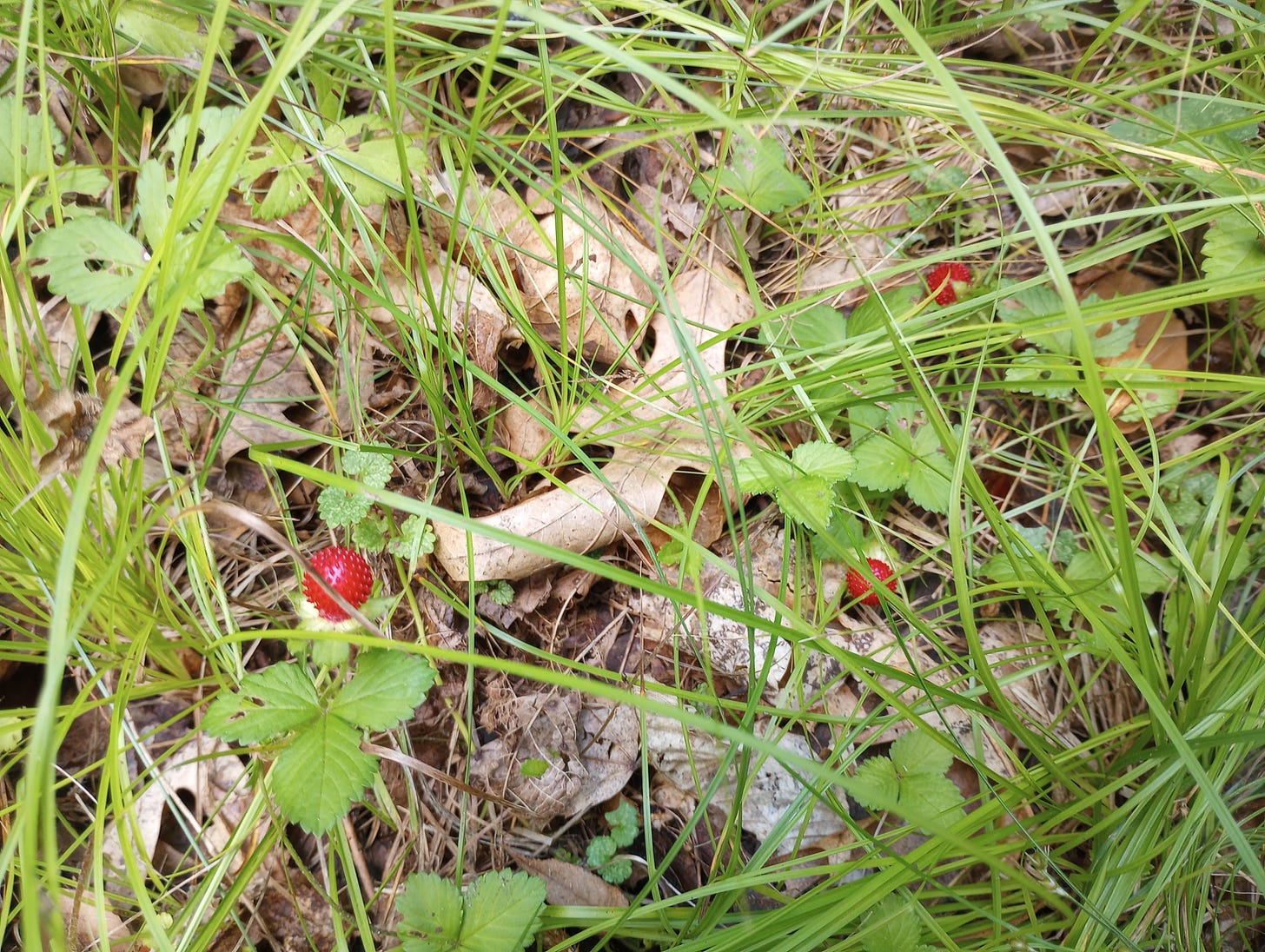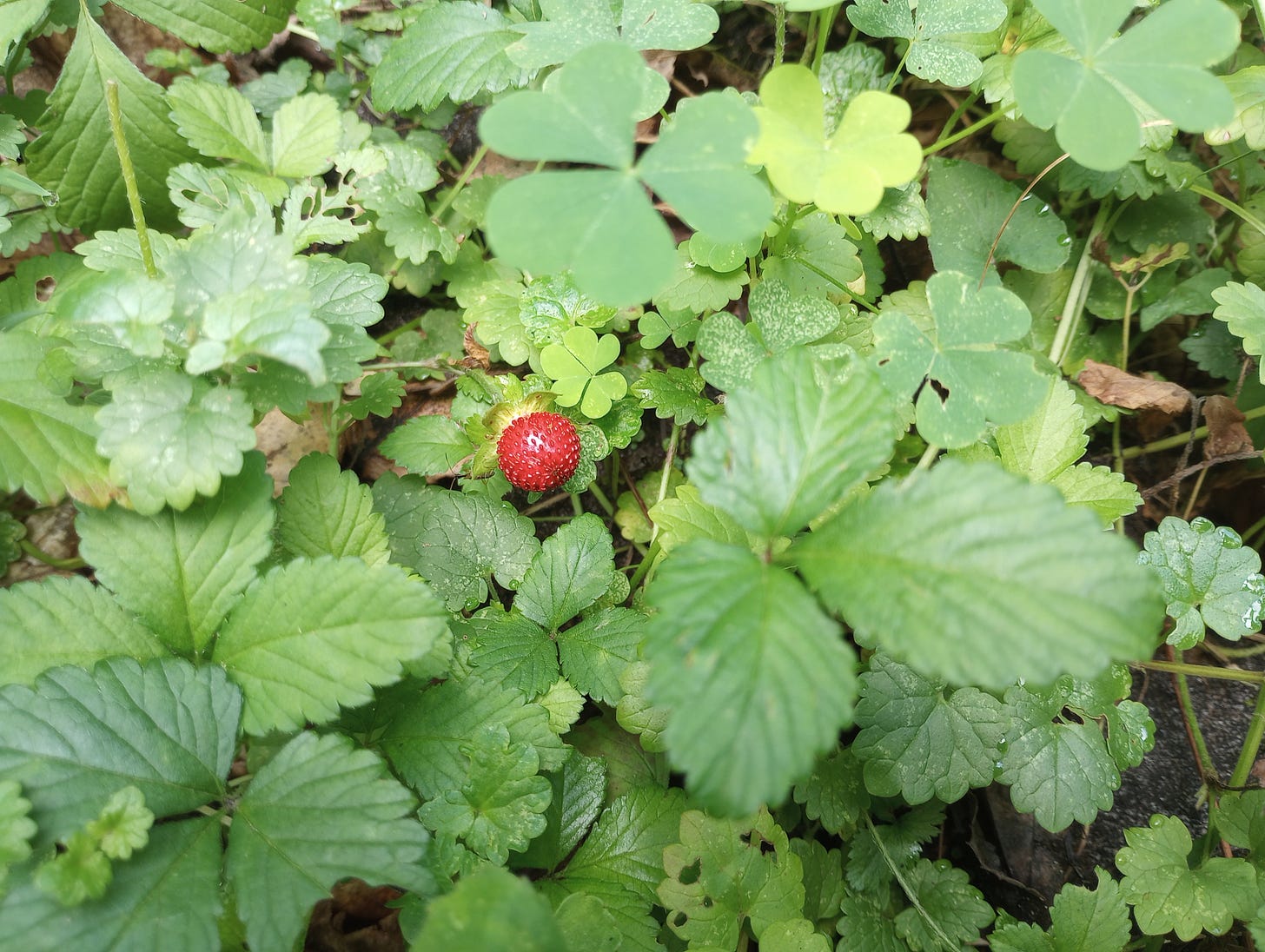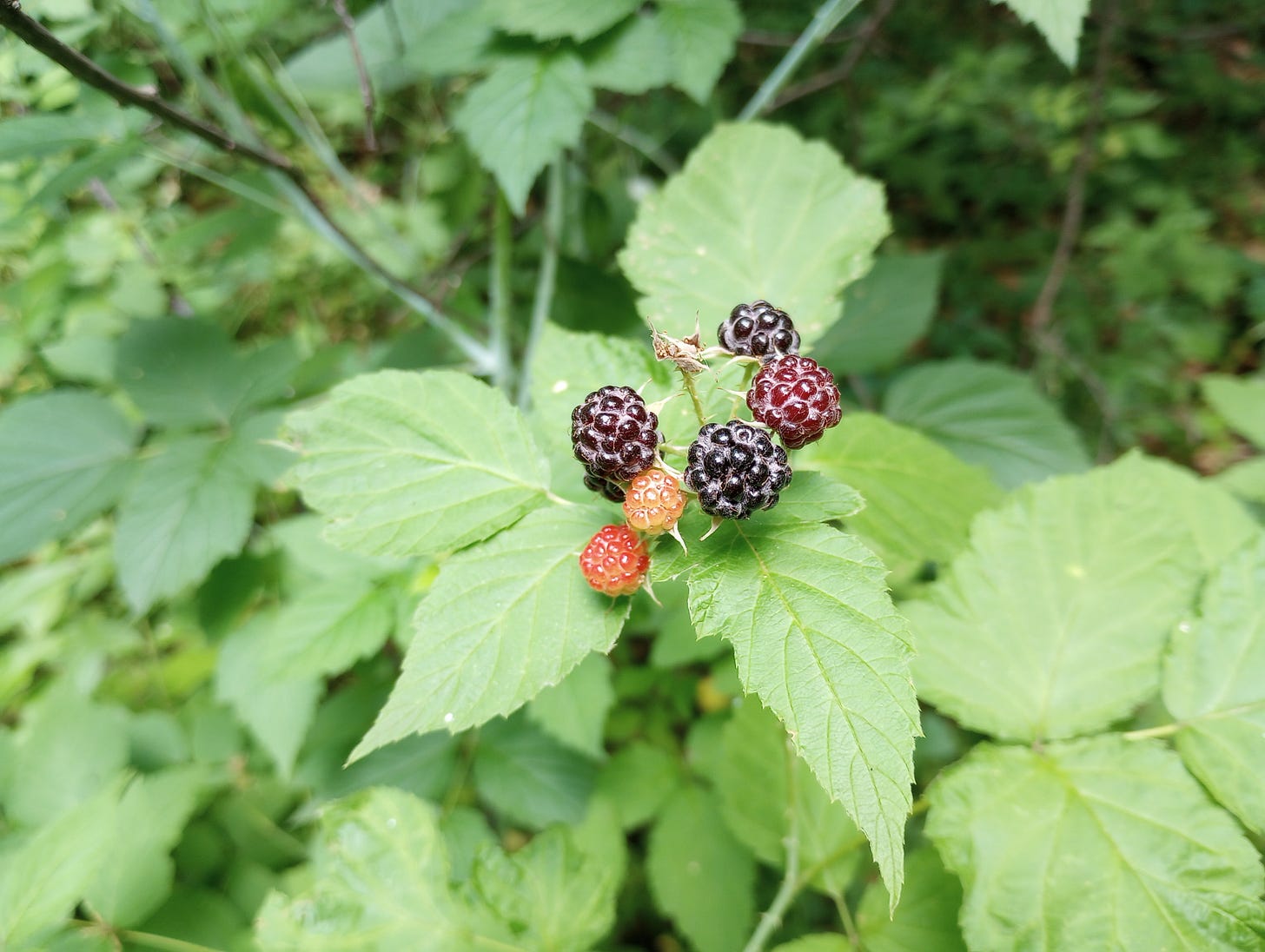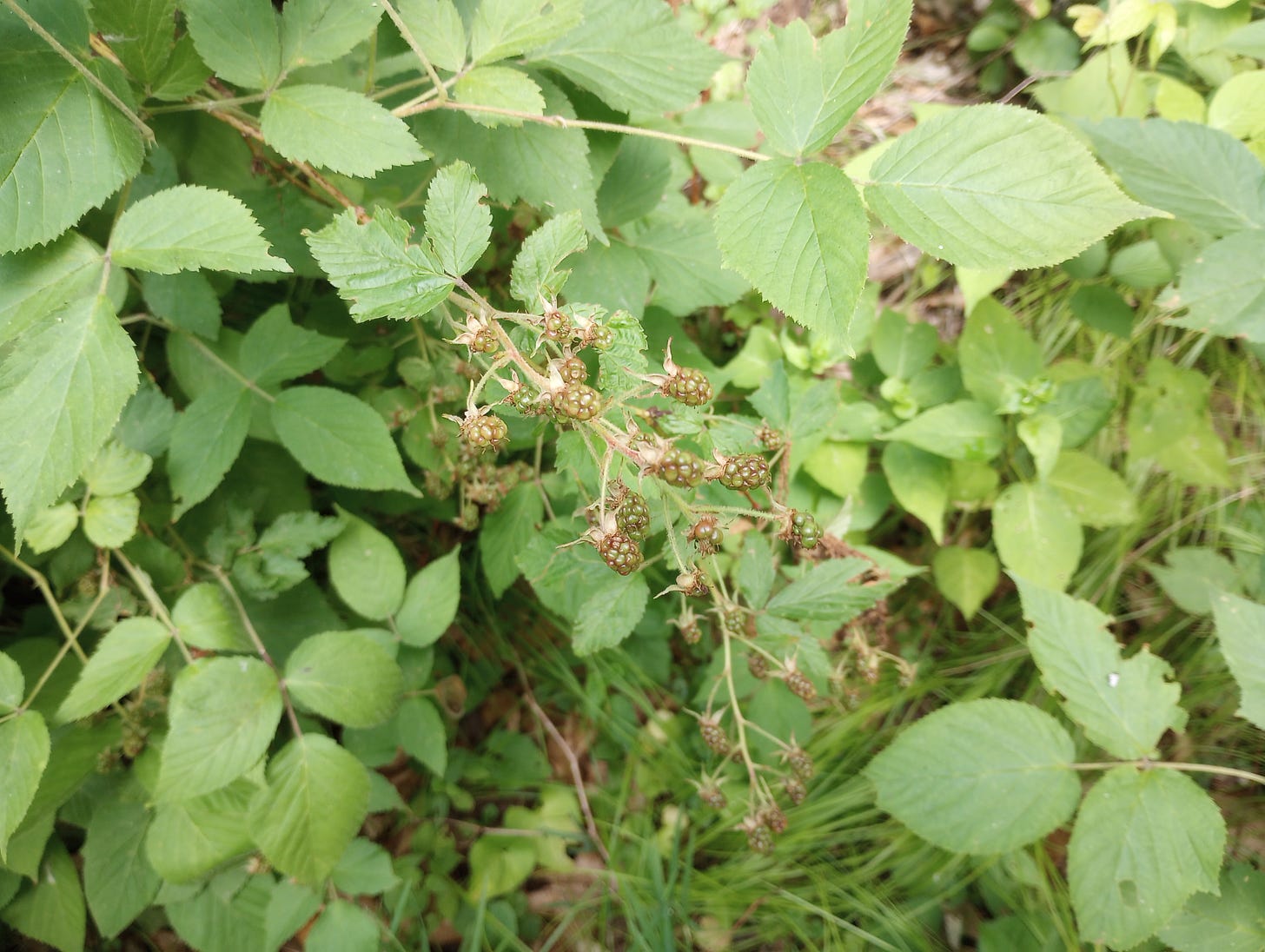Salicylate Sensitivity & more food lists, protein in beans, Indian cuisine, Type 2 DM, alcoholism and boundaries.
Another walk around the block post. With fruit! *So I added a tl;dr
The Too Long;Didn’t Read (tl;dr):
Salicylates can be a beneficial plant phytonutrient with pain relieving and anti-inflammatory benefits in addition to helping against cancer.
The cuisine of India is an excellent example of how to cook to increase your intake of the salicylate rich herbs and spices. Caution against too much carbohydrate intake in ratio to protein though, that may promote Type 2 Diabetes mellitus. Adding low carb nuts would increase protein and provide satiating fat to the meal. Pecan, macadamia, hazelnuts and Brazil nuts are lower in carbohydrate, while pistachio and cashew are high carb compared to other types of nuts.
Some people may be sensitive to salicylates and need to restrict use of dietary or medication sources to whatever amount their body can tolerate. Salicylates are broken down in the liver and kidney.
Symptoms of salicylate sensitivity could easily be mistaken for other conditions (for symptoms, see this post: (Substack) and treated with a variety of medications for symptom control - which would not help reduce salicylate intake or the cause of the symptoms. And if they included aspirin or other pain relieving NSAIDs, it would add to the problem by also inhibiting cyclooxygenase (COX 1 and COX2). See this post: (Substack)
Slightly unrelated point - if an alcoholic in your life - or you - has suicidal urges - please know and keep in mind that it is the direct effect of the alcohol on the prefrontal cortex. Any blaming or manipulation regarding the suicidal urges needs to be firmly bounced back at the alcohol user and their own alcohol use. When we don’t know the cause of a problem, we tend to blame something or someone, because our brains try to find reasons even for things that really don’t have a reason. This post wanders around several blocks, and back again, and towards the end has a section on suicidal urges which includes alcoholism and suicide risk. Rest in peace, Dr. Zelenko. (Substack).
This is the second post in a series.
Post 1: Guaifenesin, fibromyalgia, and salicylates. (Substack)
Post 2: Salicylate Sensitivity & more food lists, protein in beans, Indian cuisine, Type 2 DM, alcoholism and boundaries. (Substack)
Post 3: Salicylate Sensitivity vs Toxicity, (Substack)
Spices are a concentrated source of salicylate, but we are not eating a 100-gram portion of a spice like we might eat a three-ounce portion of a fruit, vegetable, or beverage.
*Addition - salicylate content seems to vary and food lists may list foods in different categories. Above 1 mg/kg is considered Very High and between 05-1 mg/kg High. This webpage includes more foods than the link in my last post about salicylates. (Salicylate Foods - Food List | ATP Science)
“Table 1: Examples of total salicylate content of food items. [1]
Fruits Food Item Salicylate/ mg/kg
Blackberries 0.81
Blueberries 0.57
Gala melon 0.62
Grapefruit 0.44
Green apple 0.55
Kiwi fruit 0.31
Nectarine 3.29
Strawberry 0.61
Vegetables Food Item Salicylate/ mg/kg
Asparagus 1.29
Carrots 0.16
Celery 0.04
Green beans 0.07
Mange tout 0.20
Mushroom (button) 0.13
Onion (white) 0.80
Tomato 0.13
Drinks Food Item Salicylate/ mg/kg
Apple juice 0.83
Cranberry juice 0.99
Grapefruit juice 0.10
Orange juice 0.68
Pineapple juice 4.06
Tomato juice 1.32
White wine 0.44
Red wine 0.50
Tea 1.06
Spices and Herbs Food Item Salicylate/ mg/kg
Black cumin 25.05
Cumin 29.76
Chat masala 5.74
Garam masala 12.85
Paprika 28.25
Turmeric 20.88
Thyme 28.60
Mint 54.20
Fennel 14.00”

Even though herbs and spices are eaten in smaller amounts, the more concentrated amount of phytonutrients adds up as we can see in the example in Table 2, which includes foods and portions eaten in a typical daily menu of someone in south India.
“Table 2. Estimated salicylate content of a typical south Indian daily menu (a)
Food Weight/g Total salicylates/mg
Idly 240 0.00 a steamed breakfast dumpling, served with Sambar
Tomato chutney 100 0.29
Sambar 50 0.58 ← vegetable lentil stew, spicy, (indianhealthyrecipes/Idli Sambar)
Vada 150 1.20 ← deep fried potato fritter indianhealthyrecipes.com/vada-pav-recipe/, also has a recipe for Green Chutney made with coriander leaves and a Dry Garlic Chutney, a blended mix with coconut flakes and red chilies, blended to a coarse powder.
Rice 200 0.00
Sambar 100 1.15 ← vegetable lentil stew
Garlic rasam 50 0.46
Pumpkin poriyal 100 0.60 ← a spiced pumpkin dish, (yummytummyaarthi.com)
Ginger pickle 5 0.29 ← 5 grams is ~ a spoonful
Banana 100 0.03 ← 3 ounces of a low salicylate fruit
Roasted peanuts 50 0.56 ← most nuts except for cashews are high in salicylates and amines, and roasting increases the amount. (thefoodintolerancedietitian.com.au) The roasted peanuts may have been pan roasted with some herbs and spices too, but I didn’t find a recipe like that.
Dosa 100 0.06 ← crispy pancake/crepe like dish made with soaked lentils and rice that is blended and then fermented. Indian cuisine is often labor intensive - and tasty. (indianhealthyrecipes.com/dosa-recipe-dosa-batter/)
Mint chutney 100 7.10 ← 3 ounces of a pureed mint side dish, (indianhealthyrecipes.com/pudina-chutney-recipe-idli-dosa-vada/) *The brilliant green of my Ground Ivy dressing fades after a couple days. Making fresh food in smaller batches more often helps preserve the beneficial phytonutrients which are also colorful pigments.
Banana 100 0.03
TOTAL 1455 [*grams of food] 12.32 (a) [*estimated daily intake of milligrams of salicylates from a typical daily menu in India.]
Salicylate content of foods derived from ref. 28. Daily menu provided by Parimala Swamy (personal communication).”
1. [pubs.rsc.org] Garry G. Duthie and Adrian D. Wood, Natural salicylates: foods, functions and disease prevention, Food Funct, 2011, (copy in my Dropbox)
Excerpts from the paper about anti-cancer benefits of salicylates are in this post:
Carrots, spices and baby aspirin help prevent cancer and inflammation; Salicylate content in foods and other phenolic acids in the same foods have anti-cancer benefits. (Substack)
A printable pdf Salicylate Content in Food, Total Health Chiropractic, with the salicylate food lists that I copied a couple sections from in a recent post: Guaifenesin, salicylates, and fibromyalgia. (Substack) see this post for the list of symptoms of salicylate sensitivity.
The pdf list groups foods into Low/High/Very High groups rather than giving the typical milligrams per 100 grams of food that is provided in the paper about foods commonly used in India. Another research group estimated daily intake of salicylates from a typical Scottish daily menu. The team mentions that previous chemical analysis has varied regarding salicylate content. They averaged the available data in combination with their own analysis for “27 different types of fruits, 21 vegetables, 28 herbs, spices and condiments, 2 soups and 11 beverages.” Using a validated food frequency questionnaire, they arrived at an average daily intake of 4.42 mg for Scottish males and 3.16 mg for Scottish females. (Wood, et al., 2011)
“Major dietary sources of salicylates were alcoholic beverages (22%), herbs and spices (17%), fruits (16%), non-alcoholic beverages including fruit juices (13%), tomato-based sauces (12%) and vegetables (9%).” (Wood, et al., 2011)

Protein intake considerations in a vegetarian/vegan diet and bean math.
Note that I am not providing links to a bunch of Scottish recipes: (a) the paper has a paywall, (b) I am recommending that the Indian cuisine is a very healthy one for people who are not salicylate sensitive. Just go easier on the rice/starches/sweets than might be typical in the Indian cuisine as diabetes is a significant concern there. I think their diet is great for spices and fresh produce and legumes as a main protein food - but when legumes are a primary protein food, then they are providing most of the starch that is needed calorie-wise. For adequate protein a vegetarian entree for a hungry person should lean towards a ratio of 1 1/2 cups of beans or dal and only a 1/2 cup of rice or only one small bread equivalent, instead of the reverse - a small amount of beans and a larger serving of rice or bread.
A half cup of cooked beans has about 6-9 grams of protein and a whopping 19-24 grams of carbs. (beaninstitute.com) An entree/main meal for an adult should have about 21 grams of protein, 3-ounce meat equivalent. For a moderate carb diet balance of 30% carb calories/20% protein/50% fat (low saturated fats though, stay below 10% of total calories), that meal should include roughly:
21 gr protein x 4 calories = 84 calories from protein. If that is 20% of total calories in a meal, then the meal is roughly 420 calories, with 126 calories from carbs (30%) (4 calories/gr = only 31.5 gr) and 210 calories from fats (50%).
One and a half cups of beans providing 21 grams of protein, would also be providing 19-24 grams of carbs per half cup, x 3 = 57-72 grams of carbohydrates without ANY rice or bread equivalent. A moderate carb (30% of total calories) meal simply can’t have that many beans - it is a high carb meal. Rice or bread would just make it even worse of a macronutrient balance. For essential amino acid balance, some grains are needed to balance the amino acid content of beans, nuts or seeds.
Type 2 Diabetes, at the root cause, really seems to simply be an excess of carbohydrate in the average dietary balance. The bean math shows that a vegan diet can’t have much carbs beyond the bean carbs. A vegetarian diet is also getting some dairy protein which is more concentrated protein but may also be adding carbohydrate calories unless it is cheese.
To make the moderate carb vegan diet work, some nuts and seeds are needed as they provide protein and fat calories without as many grams of carbs. Lower carb nut choices may be needed though.
Nut math: Pecan, (4 gr net) macadamia, (5 gr) hazelnuts (7 gr) and Brazil nuts (4 gr) are lower in carb content than other nuts (gr per one ounce). Hazelnut peels are an oxalate risk like almonds, but they can also be blanched. Brazil nuts are such a good source of selenium that too many too often can lead to excess selenium - 1-2 Brazil nuts per day would be the target amount to provide adequate selenium in the diet. Cashews (22 gr) and pistachios (15 gr) are relatively high carb compared to other types. (dietdoctor.com/low-carb/nuts)
One hundred grams of raw hazelnuts contains ~ 13.5 grams protein, 53.5 grams fat, and 26.5 gram carbohydrate. (USDA) 100 grams is slightly over 3 ounces. One ounce, about a 1/4 cup or less, would add 4.5 grams protein with only 7-9 grams of carbohydrate and 17-18 grams of fat. Fat is satiating and slows down digestion and the rate carbohydrates are added to the blood sugar level.
More bean math - one cup of cooked beans equals approximately 14-18 grams of protein and 38-48 grams of carbs, so add some low carb veggies and nuts or seeds rather than rice or a bread.
100 grams of dry Great White Northern Beans, ~ 3 oz dry has 24.7 grams protein and 37.9 grams of starch. (USDA) Two and half cups dry beans or two cups split peas or lentils, one pound, makes about 6 cups cooked legumes. One hundred grams of Great White Northern beans is a half-cup dry - I measured some of my dry beans after using a gram scale to measure 100 grams. How soft you cook the beans affects cup measurements of the cooked yield - roughly, the 100 grams dry beans cooks into a little over a cup rather than 1 1/2 cups if you aren’t making it a brothy soup. Great White Northern beans are a higher protein bean choice.
Eating well is not as easy as you might think.

Returning to the salicylate sensitivity topic - pomegranate is in the Moderate category - BUT pomegranate peel would be in the Very High category probably. Antioxidants can offer pain relief as they inhibit COX2, similarly to aspirin and other salicylates, but aspirin and other NSAIDS inhibit both COX1 and COX2. Excess inhibition of either cyclooxygenase enzyme can lead to edema.
See: NSAIDs are COX1 and COX2 Inhibitors, while Antioxidants are COX2 Inhibitors, March 18, 2020, (Substack). *CoV related article.
So, if I want to stick with pomegranate, which I do, then I need to cut back on some of the herbs, spices, and fruits that I have been eating more often lately. Salicylate sensitivity seems to be an additive problem, so a little taste is not going to impact as much as nibbling wild strawberries off and on all day the way I have been lately, and then black raspberry season started too. (Sob, whine, cry.)
Many of my favorite spices are also higher in salicylates, so I just need to moderate use of those a bit and try to find some substitutes.
Sage? No, it is mentioned as a higher source of salicylates, and turns out, thujone too. Excess of the essential oil can cause seizures like Wormwood. Ground Ivy is in the mint family, so my Ground Ivy salad dressing/mayonnaise may also have upped my total salicylate intake lately.
This is kind of depressing, but I have been breathing easier and the muscle knots and gut issues are better, after just two days of not eating strawberries/raspberries and with the addition of Mucinex/guaifenesin. I also stopped adding rosemary, but thyme is also a salicylate herb. I am kind of sad. Food sensitivities are annoying, but not being able to breath, having very swollen legs and being so gassy that it hurts, are worse.
Not everyone is the same. I have encountered more than a few people who don’t seem to care that their favorite foods are hurting them. They just keep eating the food that is causing their problems. I don’t know if it is disbelief in the research, or what.
Addicts/addiction gets a ton of negative stigma, while making yourself ill with food gets support and is promoted even. Stigmatizing fat people is not right, but glorifying obesity as beautiful, is really not right either. It is an inflammatory condition that frequently shortens lifespan and reduces ability to function as well. Alcohol is also extremely promoted in the US, and it can be hard to navigate social functions as a non-drinker because “not drinking” is so weird or “Oh, you must be an alcoholic who can’t handle it…” and that can lead to some subtle stigma too. The conformers are all drinking and being the life of the party that they may not even remember the next day.
Reminder for anyone living with an alcoholic who is ‘suicidal’ - no matter how blamey they might be, or emotionally manipulative, their suicidal urges are not your fault - no matter how far you bend over backward trying to please that blamey person - they are going to continue to have suicidal thoughts or attempts, as long as they are still a chronic alcohol abuser. If they keep blaming you instead of accepting the FACT that suicidal urges in alcoholism is the ALCOHOL - leave, get out. they are a lost cause until they can accept that fact. Their death by suicide would be sad, but their slower death by alcohol would still happen eventually = NOT YOUR FAULT. Children may not be taught that they have a right to not remain around an abuser or drunk person. Women may not be taught that they have a right to not be abused by a significant other - and society even supports that. Stay with your man, he needs you! You bitch, you left him! He left you every single time that he got drunk, blacked out, and didn’t even remember the nasty things he did (or she did, or ‘they/zhey/zhee’ did, etc….)
I try to figure out what my changing body needs and doesn’t need and provide that as best I can. Sometimes that means giving up favorite foods, or leaving an abusive person.
*Dear new readers - I do tend to take the long way around the block and pick some flowers in my posts, we get the fruit this time!
Summary points:
Salicylates can be a beneficial plant phytonutrient with pain relieving and anti-inflammatory benefits in addition to helping against cancer.
The cuisine of India is an excellent example of how to cook to increase your intake of the salicylate rich herbs and spices. Caution against too much carbohydrate intake in ratio to protein though, that may promote Type 2 Diabetes mellitus. Adding low carb nuts would increase protein and provide satiating fat to the meal. Pecan, macadamia, hazelnuts and Brazil nuts are lower in carbohydrate, while pistachio and cashew are high carb compared to other types of nuts.
Some people may be sensitive to salicylates and need to restrict use of dietary or medication sources to whatever amount their body can tolerate. Salicylates are broken down in the liver and kidney.
Symptoms of salicylate sensitivity could easily be mistaken for other conditions (for symptoms, see this post: (Substack) and treated with a variety of medications for symptom control - which would not help reduce salicylate intake or the cause of the symptoms. And if they included aspirin or other pain relieving NSAIDs, it would add to the problem by also inhibiting cyclooxygenase (COX 1 and COX2). See this post: (Substack).
The symptoms themselves may make it more difficult to concentrate on figuring out what is wrong as ‘ADHD’ can be a symptom. From my own recent experience with excess salicylate symptoms - yes, I was not only congested, a little asthmatic, with gassy, bloaty, digestive pain, very swollen calves and legs, and increased muscle and joint pain - I was also feeling a lot more scattered, with difficulty making decisions or focusing, and more forgetful and impulsive. Example: I lost my phones recently and had to replace them. How? My purse wasn’t closed well, the phone was on top. I ran down the street to save a few minutes, swung the purse over my shoulder while jogging, felt an odd lump, which then left, I didn’t question it or stop - until I got back to the car and wanted to check the time on my phone. Then no phone. Sit, think, retrace my steps, search the store and the sidewalk….no phone case. Busy downtown street. They are gone. And it didn’t save me anytime with the search time added in.
“Slow down, you move too fast, time to make a good thing last.” The 59th Bridge Song (Feelin’ Groovy), by Simon & Garfunkel (Youtube)
Slightly unrelated point - if an alcoholic in your life - or you - has suicidal urges - please know and keep in mind that it is the direct effect of the alcohol on the prefrontal cortex. Any blaming or manipulation regarding the suicidal urges needs to be firmly bounced back at the alcohol user and their own alcohol use. When we don’t know the cause of a problem, we tend to blame something or someone, because our brains try to find reasons even for things that really don’t have a reason. This post wanders around several blocks, and back again, and towards the end has a section on suicidal urges which includes alcoholism and suicide risk. Rest in peace, Dr. Zelenko. (Substack).
Disclaimer: Opinions are my own and the information is provided for educational purposes within the guidelines of Fair Use. While I am a Registered Dietitian this information is not intended to provide individual health guidance. Please see a *functional health professional for individual health care purposes.
Reference List
[pubs.rsc.org] Garry G. Duthie and Adrian D. Wood, Natural salicylates: foods, functions and disease prevention, Food Funct, 2011, (copy in my Dropbox)
(Wood, et al., 2011) Wood A, Baxter G, Thies F, Kyle J, Duthie G. A systematic review of salicylates in foods: estimated daily intake of a Scottish population. Mol Nutr Food Res. 2011 May;55 Suppl 1:S7-S14. doi: 10.1002/mnfr.201000408. Epub 2011 Feb 23. PMID: 21351247. https://pubmed.ncbi.nlm.nih.gov/21351247/ (paywall)






Your post reminded me to check out the salicylate content of wintergreen essential oil, and boy, it's a doozy.
Added to peppermint oil it exhibits synergistic effects too.
Wintergreen
Scientific Name(s): Gaultheria procumbens L.
Common Name(s): Boxberry, Canada tea, Checkerberry, Deerberry, Gaultheria oil, Mountain tea, Partridgeberry, Teaberry, Wintergreen
...Wintergreen oil is 98% methyl salicylate. 1 mL of wintergreen oil is equivalent to 1.4 g of aspirin; therefore, 5 mL of wintergreen oil is equivalent to approximately 7 g of aspirin (which is the equivalent of 21.5 aspirin [325 mg] tablets). Even small doses of oral wintergreen oil may cause toxicity.
https://www.drugs.com/npp/wintergreen.html#:~:text=Wintergreen%20oil%20is%2098%25%20methyl,%5B325%20mg%5D%20tablets).
I do enjoy the information you post.
your efforts are much appreciated.
many of your articles, like this one, end up bookmarked in my medtech folder for future reference if needed